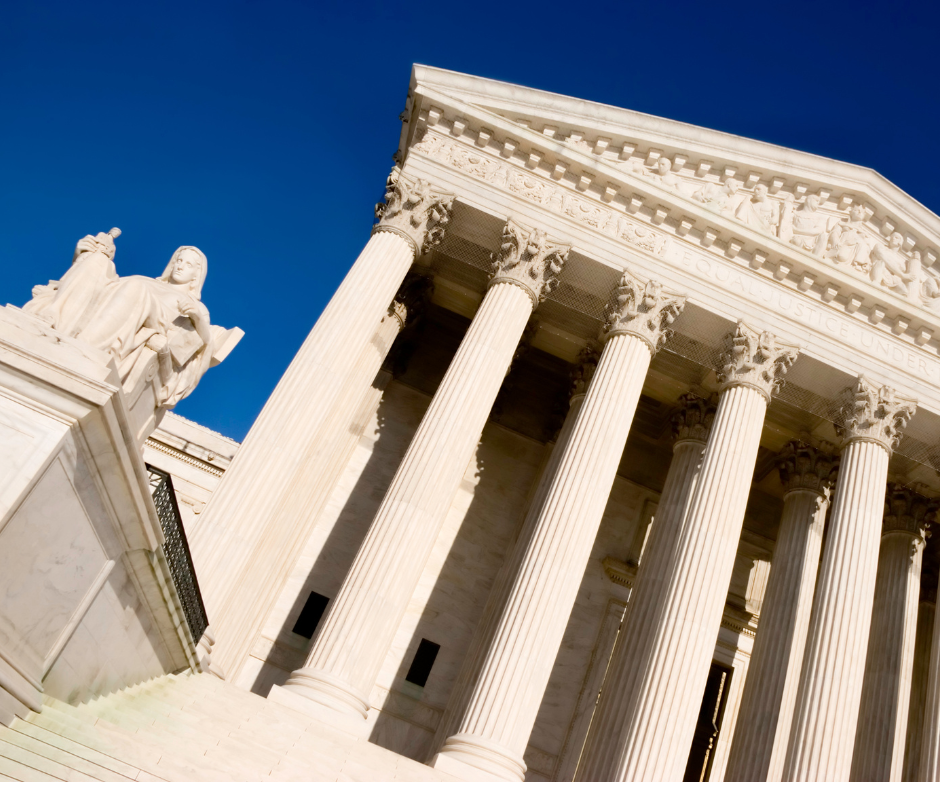
U.S. Supreme Court Limits Regulatory Authority of Federal Agencies
By Richard S. Johnson, J.D., Executive Vice President of PartnerSource
Recently, the U.S. Supreme Court in a series of cases restored balance to the separation of powers between the legislative, executive and judicial branches of the federal government.
BACKGROUND
In the U.S. Constitution, our founding fathers intentionally separated government power between the legislative branch (Congress) who write and pass laws, the executive branch (President, federal agencies) who put those laws into effect through regulations, and the judicial branch (federal courts) who interpret laws.
However, as the executive branch has grown dramatically over the past 40 years, it has used executive orders and federal regulations as a way to bypass Congress and quickly put in place the President’s policy objectives. Recent examples in the news include student loan forgiveness and the Federal Trade Commission trying to ban non-compete agreements in employment contracts.
Since 1984, anyone who challenged this type of overreach by federal agencies was in most cases defeated in court by the “Chevron doctrine.” In the 1984 case Chevron v EPA, the U.S. Supreme Court required courts in most cases to defer to (i.e., accept) how federal agencies interpret laws when those agencies wrote federal regulations.
U.S. SUPREME COURT OVERRULES THE CHEVRON DOCTRINE
On June 28, 2024, in Loper Bright Enterprises v Raimondo, the U.S. Supreme Court overruled the Chevron doctrine and established a new standard of review for federal regulations. Based on the Loper decision, courts must give equal weight to federal agency and challenger interpretations when hearing arguments over federal regulations. The courts must then use their independent judgment and determine which interpretation of the law is the “best.” In other words, courts are no longer required to “rubber stamp” federal agency interpretation of the law when hearing challenges to federal regulations.
COMPANION CASES
On June 28, 2024, the U.S. Supreme Court issued three additional cases that limited federal agency authority:
- SEC v Jarkesy - the Court narrowed the range of penalties that federal agencies can impose through their internal administrative processes. In this case, an administrative law judge (ALJ) imposed civil penalties. The Court held that these types of damages are a “legal remedy” that only a court (or arbitrator) can impose under common law.
- Ohio v EPA – In this case, the Environmental Protection Agency ignored major issues raised by commenters as part of the public comment period that applies to developing federal regulations. The Court said that the agency must at least acknowledge issues raised by group commenting on proposed regulations and then explain why the agency rejected these issues.
- Corner Post, Inc. v Board of Governors of the Federal Reserve System – the Court expanded the time period that a challenger can sue to block a federal regulation from going into effect. The Court held that the statute of limitations does not start until a challenger is “injured” by the regulations – not the date that the final regulation was originally enacted by the federal agency.
IMPACT ON TEXAS OPTION EMPLOYERS
Although unclear at this point, these new cases create potential pros and cons for employers with Texas Option Programs:
- Federal agencies will need to write regulations that are narrow and more clearly tied to the terms of the law that the agency is interpreting.
- The new standard of court review gives employers and plan administrators a better process (and a more fair fight) for challenging overreach by federal agencies.
- Future federal regulations will likely encounter more delay going into effect due to a new added layer of independent judicial review.
- The new cases erode federal agency ability to enforce existing regulations – the agencies can no longer collect civil penalties based on ALJ decisions.
- Because federal agencies may now consider it too burdensome to write formal regulations, employers may now get more informal federal agency guidance (e.g., bulletins, opinion letters). Unlike the federal regulation process, this type of nonbinding guidance does not allow the public to first question/comment on the guidance before the federal agency issues it.
Federal agencies may now proactively file suit in courts located in friendly venues. This tactic could allow federal agencies to more easily get their interpretation of regulations enforced by courts.
The Department of Labor (DOL) is the federal agency that oversees Texas Options Program through (1) the Employee Retirement Income Security Act (ERISA) that governs Texas Injury Benefit Plans, (2) OSHA that governs workplace safety, and (3) various federal employment laws. In State of Utah v Su, the U.S. Fifth Circuit Court of Appeals (which includes Texas) recently heard oral arguments on a case seeking to vacate an ERISA regulation enacted by the DOL. The regulation indirectly encourages retirement plan managers to consider ESG factors when deciding between two investment options. Although this case does not directly affect most Texas Work Injury Benefit Plans, it will provide a window into how the Fifth Circuit intends to apply the new Loper standard of court review to ERISA benefit plans in the future.
If you have any questions or need more information, please contact Richard at (214) 316-9395 or contact your PartnerSource team leaders.
